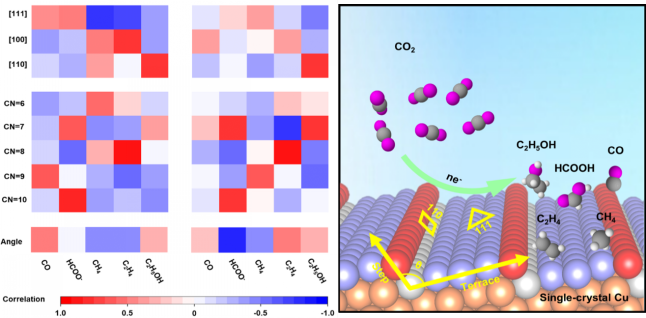Aqueous electrochemical CO2 reduction (CO2R) on Cu can generate a variety of valuable fuels, yet challenges remain in the improvement of electrosynthesis pathways for highly selective fuel production. Mechanistically understanding CO2R on Cu, particularly identifying the product-specific active sites, is crucial. Herein, We rationally designed and fabricated nine large-area single-crystal Cu foils with various surface orientations as electrocatalysts, and identified the voltage- and facet-dependent CO2R selectivities. Operando grazing incidence X-ray diffraction (GIXRD) and electron back-scattered diffraction (EBSD) were applied to track the top-surface reconstructions of Cu, and correlate the structural evolution with the change of product selectivities. We extracted three distinct structural descriptors, including crystal facet, atomic coordination number and step-terrace angle, to reveal the intrinsic structure-function relationships, and uniquely identify the specific product-producing sites for CO2R. Our work guides the rational design of Cu-based CO2R electrocatalysts, and more importantly, establishes a paradigm to understand the structure-function correlation in catalysis.

